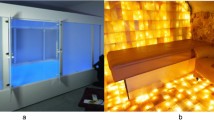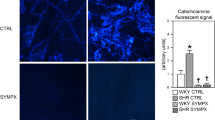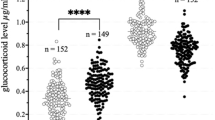Abstract
CHLORDIAZEPOXIDE, a new psychotherapeutic drug, chemically unrelated to either phenothiazine derivatives or indole–alkaloid derivatives, has been reported to show a number of pharmacological activities1. A possible hypothalamic activity of chlordiazepoxide has been reported2. We have investigated the effect of this drug on a physiological activity controlled by the hypothalamus, that is, eosinopenia after emotional stress. The emotional stress was applied to rabbits weighing 1.5–2 kg by the method of O'Conor and Verney as adopted by Colfer et al.3. Blood samples were taken from the ear veins of rabbits once before and again 3.5 h after the emotional stress (electric shock) was administered. The strength of the stimulus given by an electronic stimulator was such that it produced signs of fright in the animal. A freshly prepared solution of chlordiazepoxide (50 mg/kg) was given intraperitoneally 0.5 h before the electric shock and by this time the animal was showing the tranquillizing effect of the drug. Electrical stimulus was not repeated for 2 days. After pretreatment with chlordiazepoxide the rabbits still showed signs of fright after a similar electric shock. The experiments were carried out on three rabbits, each animal acting as its own control. Average means of blood counts are as follows. Before administration of drug and stimulus, total white blood cell count was 4,860/cm, and the total number of eosinophils was 486 (10 per cent)/cm. Total white blood cell count 3.5 h after electric shock was 6,187/cm (a rise of 28.5 per cent), and the total number of eosinophils was 309.35 (5 per cent)/cm (a significant fall). Total white blood cell count 3.5 h after administration of chlordiazepoxide and electric shock was 5,175/cm (a rise of 6.4 per cent), and the total number of eosinophils was 466/cm (8.25 per cent, no significant change).
This is a preview of subscription content, access via your institution
Access options
Subscribe to this journal
Receive 51 print issues and online access
$199.00 per year
only $3.90 per issue
Buy this article
- Purchase on Springer Link
- Instant access to full article PDF
Prices may be subject to local taxes which are calculated during checkout
Similar content being viewed by others
References
Randall, L. O., Schallek, W. B., Heise, G. A., Keith, E. F., and Bagdon, R. E., J. Phar. Exp. Therap., 129, 163 (1960).
Dasgupta, S. R., and Paul, G. H., Bull. Calcutta University College of Medicine, 2, 4 (1964).
Colfer, H. F., De Groot, J., and Marris, G. W., J. Physiol., 111, 328 (1950).
Author information
Authors and Affiliations
Rights and permissions
About this article
Cite this article
DASGUPTA, S., MUKHERJEE, B. Effect of Chlordiazepoxide on Eosinopenia of Stress in Rabbits. Nature 213, 199–200 (1967). https://doi.org/10.1038/213199b0
Issue Date:
DOI: https://doi.org/10.1038/213199b0
This article is cited by
Comments
By submitting a comment you agree to abide by our Terms and Community Guidelines. If you find something abusive or that does not comply with our terms or guidelines please flag it as inappropriate.



